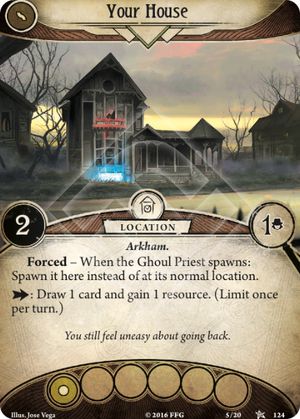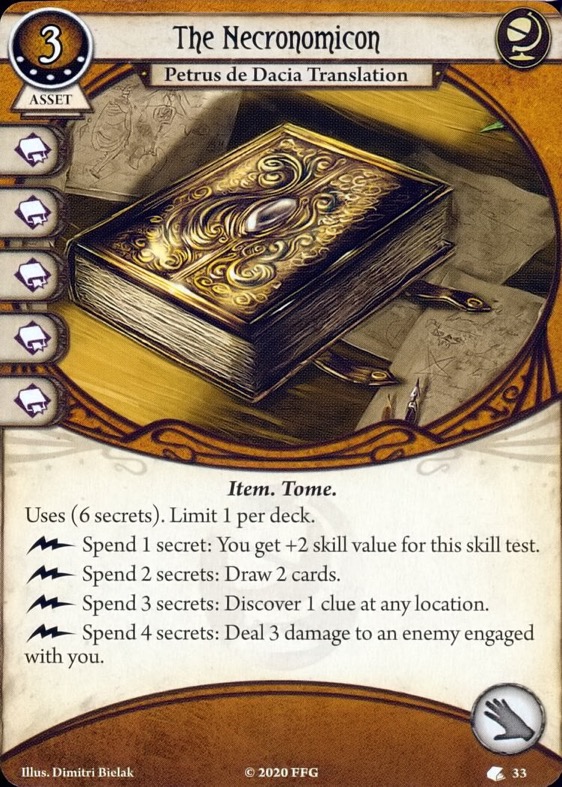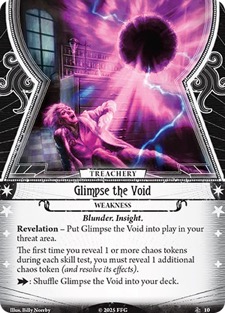| T’was the Night of the Zealot and all through my house |
| Some creatures were stirring, far worse than a mouse! |
| I`d gathered some friends to research with care, |
| local ghoul activity, of which few were aware. |
| . |
| As many of Arkham were snug in their beds, |
| And visions of yellow kings danced in their heads |
| We sat and we focussed without even a nap. |
| When the door to my study vanished with a snap!! |
| . |
| My home was invaded! It caused such a clatter! |
| We sprang to our feet to address the matter. |
| I pulled back my rug in despair like a flash |
| Finding a door to my hall beneath like a Cache!!! |
| . |
| Tumbling into to my hall, not beside but below, |
| to a barrier of heat, that we smashed with some snow. |
| When what to my wondering eyes should appear, |
| but a nightmarish ghoul priest with horns of Reindeer! [seriously check out the art] |
| . |
| Our saviour was named Lita, who lively and quick, |
| BURNED DOWN MY DEAR HOUSE! ghouls and all, to the brick! |
| “Theres a cult in our town” she began to exclaim, |
| She ranted, and shouted, and then called them by name. |
| . |
| Theres Turner! Theres Collins! Theres Warren and Drew! |
| Theres Cooper, and Hill! Pierce and Devereux! |
| “You must go fast to the town! Now go stop them all! |
| Now dash away! Dash away! Go stop The Cabal!” |
| . |
| So into town, like a hurricane, we did fly |
| And late into the night we searched low and searched high |
| And around all the houses like coursers we flew, |
| Slaying masked cultists, and persuading a few |
| . |
| When then, a slight twinkling, I heard on a roof, |
| A deer masked man had stalked us, lacking aloof |
| As I drew in my head, and was turning around, |
| Down from a tall chimney stack he leapt with a bound. |
| . |
| He was dressed all in leather, from his head to his foot, |
| His clothes were not tarnished with ashes or soot. |
| We tumbled and fumbled, evading his attack. |
| Until midnight when he left rejoining his pack. |
| . |
| They`d gone to the woods for a ritual? ... “How Merry!” |
| “No” exclaimed Lita. “Its about to get hairy!” |
| "In revenge for their lair I burned a night ago, |
| They’ll summon Umôrdhoth, The Devourer Below!" |
| . |
| We searched deep into the forest, beyond the old heath |
| Following glyphs to a cave wrapped in smoke like a wreath |
| While the dark chamber within lit by candles wasn’t smelly, |
| its walls shifted and warped like a bowl full of jelly |
| . |
| And stood blocking the door was the deer man himself |
| Other cultists stood smirking, like a jolly old elfs. |
| A wink of his eye and a twist of his head, |
| Soon gave me to know I had plenty to dread. |
| . |
| Too late was it now, the rite began its work. |
| And all filled with a terror, we turned with a jerk. |
| Warped shadows stretched high as Umôrdhoth rose |
| As its writhing blue tendrils engulfed the enclose |
| . |
| “’Tis Lita it wants!”. We threw her to the bristle |
| It consumed her whole then vanished with a whistle |
| Appeased, the deer man exclaimed, now just out of sight, |
| “Be that a lesson to all, and to all a good night!” |
| . |




